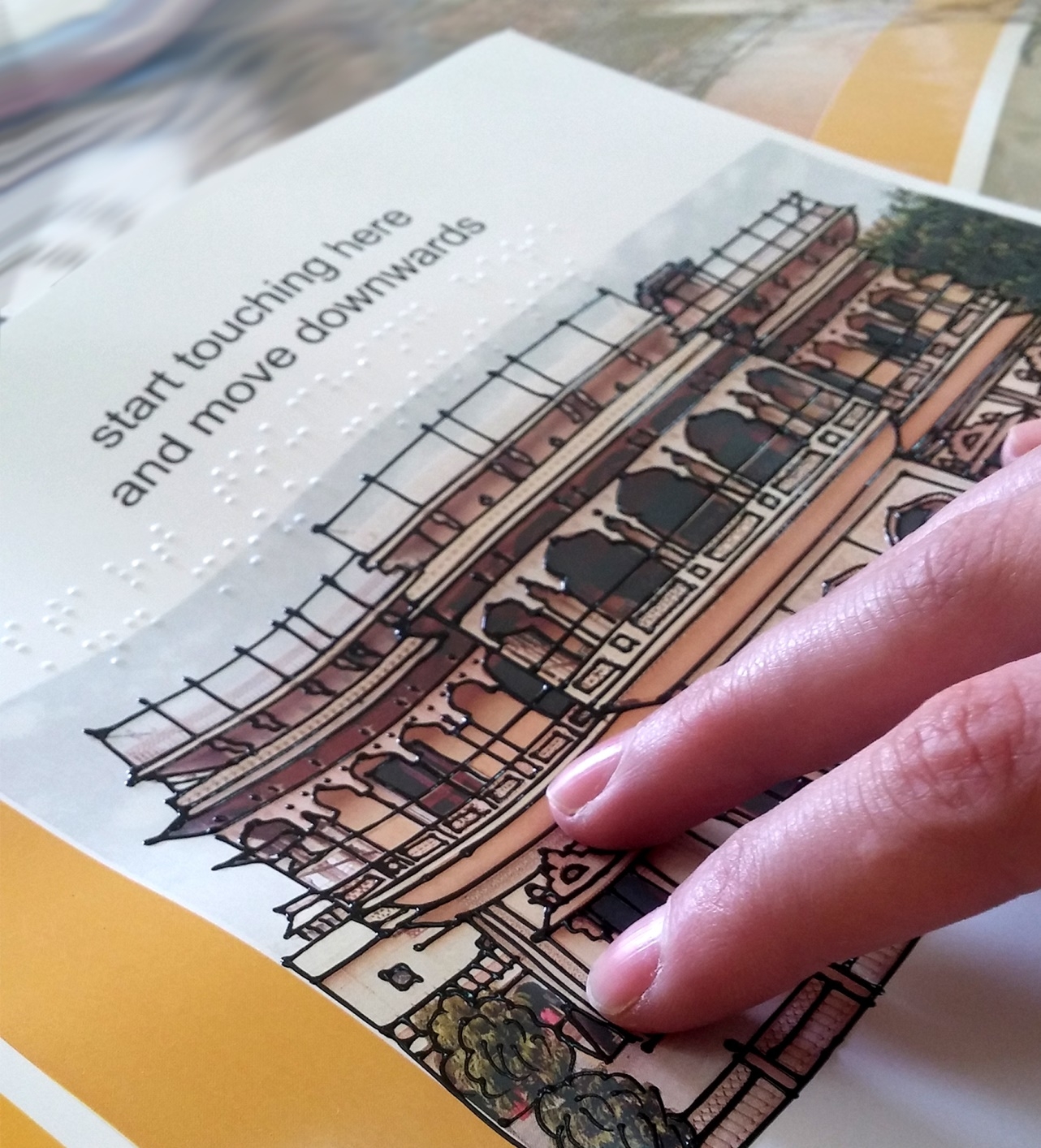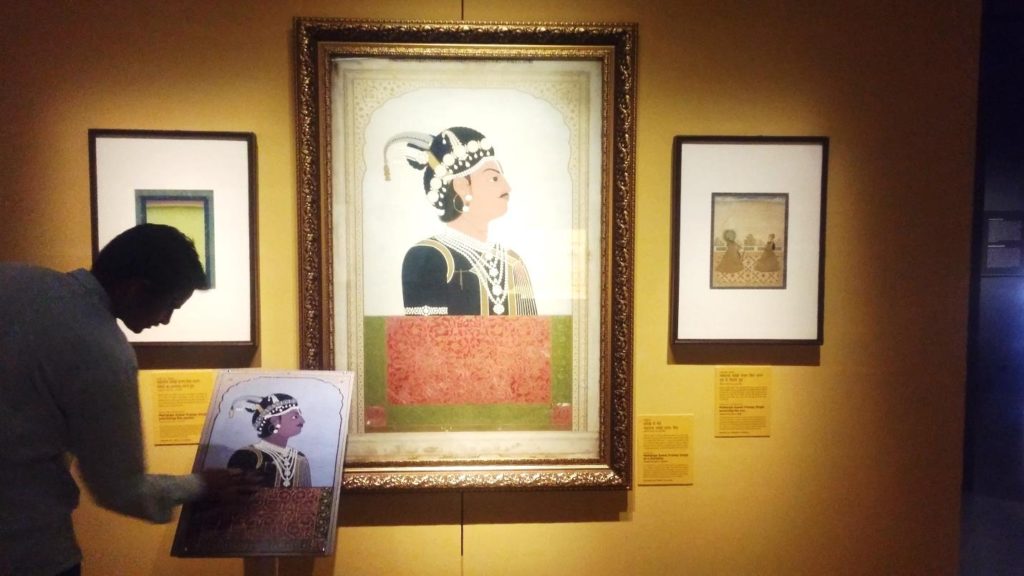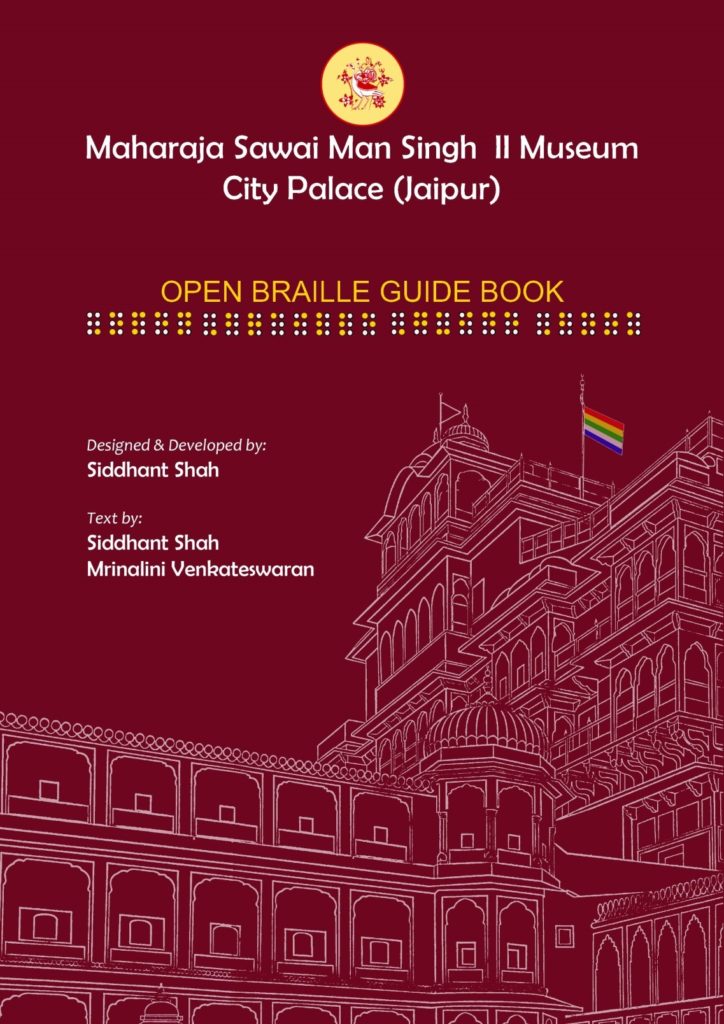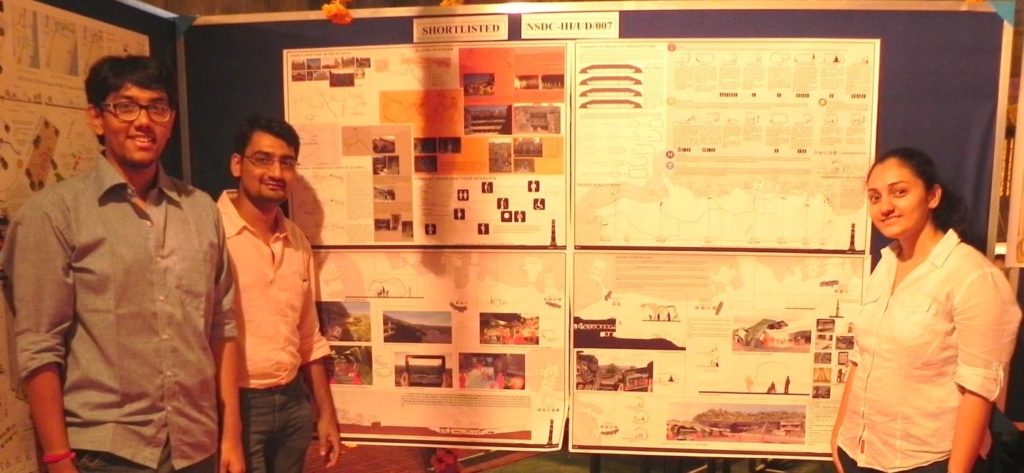Accessibility in museums and heritage sites is a pursuit that is taken seriously by many institutions. ReReeti’s Tejshvi Jain chats up with Siddhant Shah , a heritage architect and access management consultant who works towards accessibility in a heritage space at different levels.
TJ – You work with museums and heritage sites as a consultant on disability access. Could you elaborate the term accessibility and the scope it has in public spaces.
SS -In the domain of museums, heritage sites and monuments, ‘Accessibility’ is discussed as a very shallow level and it is immediately associated with physical access into a site or museum complex. Well, being an architect my first aim is always to make any public space/ site physically accessible through ramps, wheelchair friendly toilets, signage and other potential interventions. Nonetheless, I do not stop here and my efforts have always been to push the discussion beyond ramps and have dialogue about intellectual and social access, something that is still in a nascent stage. There is an immense scope for various involvements to make the public spaces and services more accessible. For example, a graphical map that I designed for Jaipur’s Maharaja Sawai Man Singh II Museum brochure, with only icons (comprehensive disabilities), color coding (works for those with low/ partial vision) and a simple key reduces the pressure of space negotiation and address multiple access related issues. Thus, in my opinion, ‘Accessibility’ refers to all the aspects of ‘DESIGN’ of products, strategies, services, or environments for people; be it abled or specially-abled.

Tactile photograph plate from the braille brochure showcasing the Mubarak Mahal with braille guide. Photo Courtesy: Siddhant Shah
TJ- Since this is a nascent area in India with respect to cultural spaces what are the reactions you get from the management? What are the challenges they face? What are the challenges you face in getting their buy in?
SS- I am happy to say that, though the reactions are mixed, 60% of them have been encouraging. I appreciate their openness and the concerns they have are very genuine. I was extremely happy at the way the National Museum welcomed me as an Honorary Resource Consultant on disability access for their Anubhav, a tactile gallery for PWD. One of the major challenges that they face is of finances and lack of trained human resources. The organizations want to do a lot of activities but they can’t as they have other priorities to complete. One of the prime reasons that the National Museum project happened was because I had a Saint Gobain Scholarship that funded me for my time, consultation services, travel and stay to New Delhi and kudos to their Education and Outreach team who was willing to allow me be a part of their team, a trait which very few organizations have in our country. The major challenge that I face is because of the lack of awareness on this issue of accessibility among most of the organizations. They have an imaginary bubble about access issues and feel that it will be an expensive disbursement. But truly speaking, this can be done in an extremely cost-effective manner if planned and strategized well.

A visitor touching the tactile reproduction of a Jaipur miniature painting at MSMS 2 museum Jaipur city palace. Photo Courtesy: Siddhant Shah
TJ – Could you talk about your journey of setting up the new tactile gallery at the National Museum, Delhi?
SS – My central focus of work on Anubhav tactile gallery at the National Museum was on Intellectual and Digital Access of the displayed collection. I strongly believe that access is about ‘Taking THEM to the CONTEXT or getting the CONTEXT to THEM’ and so for this I worked upon an interpretation plan. I wrote the script for the audio guide which was very specifically targeted towards Visually Impaired audience, which helped during the tactile walk. One also needs to think about the audiences who can’t come to the museum space, so how do they access these beautiful treasures of history? How can they virtually explore and experience them? To answer these questions I had drafted and presented a Website Accessibility Plan to their Education and Outreach team to make it compliant for a larger section of the users and it was quite well received by them.

Cover of the braille book for the Jaipur city palace . Photo Courtesy: Siddhant Shah (MSMS II Museum Trust)
TJ -You co-authored India’s first Open Braille guide-book with large script font and tactile plates for the Jaipur City Palace. What are the other different and innovative means used by you to increase accessibility at the museum?
SS -The braille book for Jaipur City Palace Museum is an important book for its design, as it was an outcome of various trials and testing them with the students of a local blind school and thus we actually understood what they wanted to be acquainted with, if they were in a museum. Tactile reproductions of the miniature artworks and photographs from the Painting and Photography Gallery were created. Here they get a sense of composition, focal object, accessories, clothes and their lifestyle. There is a 3D tactile map of the old city of Jaipur which was planned on the nav-graha system. This model helps them understand the concepts of grid planning, architectural concepts like fortification walls, doors and urban planning. Since there are no laid down rules or a precedence to follow, we got an oppurtunity to experiment with materials and methods. For example, during my ‘Abhas, a Tactile Art Walk’ program at Delhi Art Gallery (DAG), I use a multi-sensory approach on understanding the artworks of Indian Masters like Raza, J. Swaminathan, Jamini Roy and others.

l-r ;Siddhant Shah,Jay kapadia and Siddhi Desai Kapadia with the award winning universal design proposal. Photo Courtesy: Jay Kapadia
TJ – You won the Universal Design Solutions to make the World Heritage Sites in India, Disabled Friendly in 2012. Could you tell us about the approach and recommendations put forth by you?
SS- I won this Universal Design Competition along with my architecture classmates, Jay Kapadia and Siddhi Desai Kapadia in 2012 for our proposal on making the UNSECO World Heritage Site of Ellora Caves accessible. Our approach was to enhance the nascent beauty of the caves by re-creating the physical manifestation of the idea of a cave for those who could not ‘physically’ go in there. As an intervention, we proposed number of small sections that were meticulously designed using facets to fulfill a specific function without defacing the historical value of the site. The facets are modified and manipulated depending upon the needs, for example in some areas we recommended exact tactile reproduction of a particular carving on these angular facets which were modulated at the precise angles for ease of use. We even proposed a virtual reality app for the site where if you place your phone or pad screen towards a particular angle then your screen would read variety of information for you. Along with that we planned a designated pathway for wheelchair friendly golf carts for easier transit. Till date we strongly feel that our design outline is socially relevant as it addresses the current need of providing practical and viable solutions through creativity and innovation into the neglected zone of disability, accessibility and equality.
 Siddhant Shah is a heritage architect and access management consultant who specializes in bridging the gap between Cultural Heritage and Disability. Shah consults national and international museums like National Museum, Jaipur City Palace Museum, State Bank of Pakistan Museum and other organizations. His scope of work includes CSR project development, strategic management planning, fund-raising, HR along with staff sensitization through simulations, capacity building, access-audits, education & outreach programs, social media marketing and communication, architectural and exhibition designing for the museums, foundations and other cultural organizations
Siddhant Shah is a heritage architect and access management consultant who specializes in bridging the gap between Cultural Heritage and Disability. Shah consults national and international museums like National Museum, Jaipur City Palace Museum, State Bank of Pakistan Museum and other organizations. His scope of work includes CSR project development, strategic management planning, fund-raising, HR along with staff sensitization through simulations, capacity building, access-audits, education & outreach programs, social media marketing and communication, architectural and exhibition designing for the museums, foundations and other cultural organizations








Recent Comments